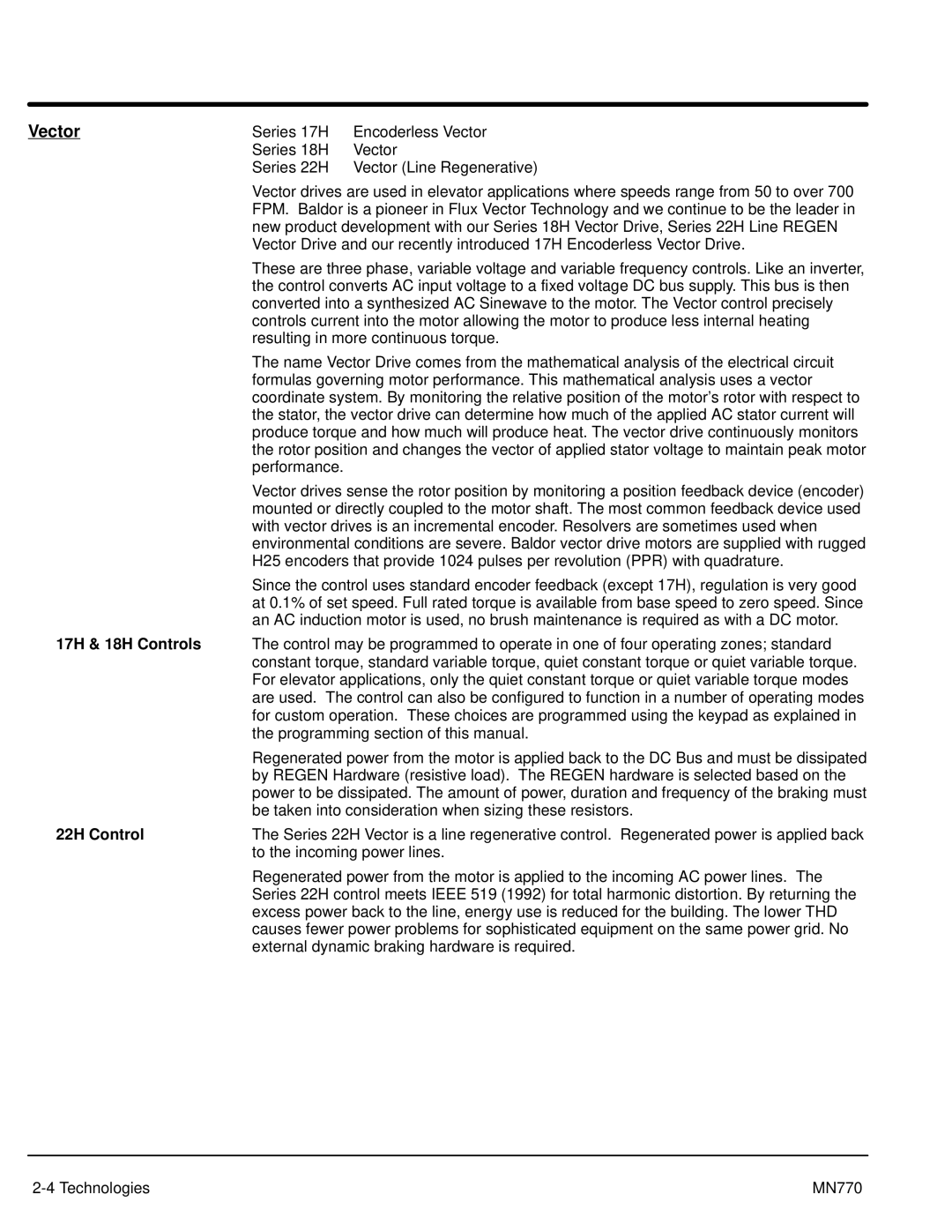MN770 specifications
The Baldor MN770 is an impressive industrial motor designed for a variety of applications, showcasing robust construction and advanced technology. Known for its reliability and efficiency, the MN770 is manufactured by Baldor Electric Company, a prominent name in the electric motor industry.One of the main features of the MN770 is its high-efficiency design. This motor adheres to stringent efficiency standards, helping to reduce energy consumption and lower operational costs. It typically meets or exceeds NEMA Premium Efficiency ratings, making it an excellent choice for businesses looking to optimize their energy use.
The MN770 motor is built with a durable cast iron frame, ensuring longevity and resistance to harsh operating conditions. Its weatherproof design is ideal for both indoor and outdoor applications, making it suitable for various environments, including manufacturing plants, water treatment facilities, and agricultural operations.
Another significant characteristic of the MN770 is its versatility. The motor is available in a range of horsepower ratings, allowing users to select the model that best fits their specific needs. Additionally, it offers various mounting configurations and voltage options, further enhancing its adaptability for diverse applications.
The motor utilizes advanced insulation systems and cooling technologies to ensure optimal performance and a longer lifespan. The robust design helps to dissipate heat effectively, enabling the motor to operate efficiently even under heavy loads. This characteristic is essential for applications requiring continuous operation without compromising reliability.
Moreover, the Baldor MN770 incorporates advanced design features such as precision-balanced rotors and high-performance bearings. These characteristics contribute to reduced vibration and noise levels, promoting a quieter working environment and improving overall operation efficiency.
In summary, the Baldor MN770 motor stands out due to its high efficiency, robust construction, versatility, and advanced technologies. Its ability to perform reliably in various industrial applications makes it a popular choice among engineers and facility managers. Investing in the MN770 not only enhances operational efficiency but also supports sustainability efforts by reducing energy consumption in industrial environments.

